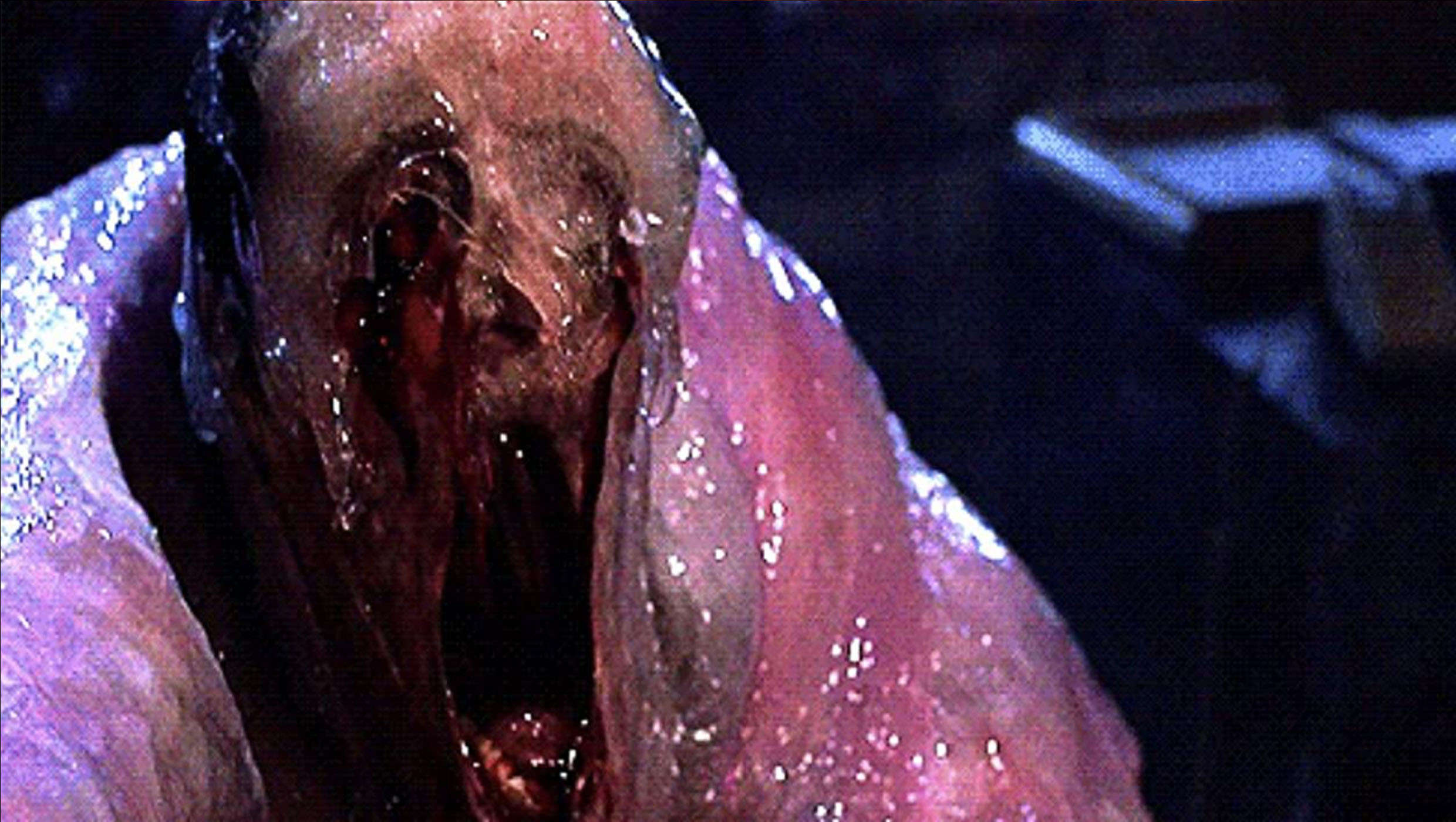Create a free profile to get unlimited access to exclusive videos, sweepstakes, and more!
The Blob? Life-forms on early Earth were probably blobs of bacteria

When the first life-forms spawned in the primordial soup that eventually became what we know as our planet, what were they really like? It could have been something that at least looks as if it came straight out of a sci-fi-horror double feature.
Whatever the Blob was really supposed to be, it is unknown whether that thing — which famously terrorized a movie theater in the 1958 film (and its 1988 remake, above) — was just one massive alien amoeba or a monster conglomeration of amoebas. Life-forms like this are not so fictional if it was the latter. Biofilms are globs of bacteria that can function as a single multicellular organism. Until now, unicellular microbes were thought to have been the first life on Earth. New research has found that some biofilms not only grow like animal embryos, but possibly evolved like them.
“The most surprising multicellularity related feature we found in B. subtilis biofilms is their memory of the evolutionary past. Molecular imprints of the evolutionary history are defining feature of animal and plant development. It’s now clear that biofilm development stores the same information as well. We can say that B. subtilis biofilms are not macroevolutionary naive,” biologist Tomislav Domazet-Lošo, a professor at the Catholic University of Croatia in Zagreb who recently led a study published in Molecular Biology and Evolution, told SYFY WIRE.
You will never, ever escape from microbes. No living thing possibly could. They crawl all over your body, inside and out, from the tiny dinosaurs that clean your eyelashes to gut bacteria that keep you from getting indigestion. Previous studies that looked at the behavior of bacterial biofilms proved that bacteria can be social. However, they never really went so far as to determine how the ontogeny of biofilms, or how they develop, compared to their phylogeny, which is how they have evolved over billions of years. Being multicellular seemed to be something exclusive to plants, animals, and fungi. That thinking was about to get attacked by a microscopic version of the Blob.
Domazet-Lošo believes that the complexity of biofilms fluctuated over the billions of years it would take to get to where it is now.
"The first life was most likely multicellular biofilms, but the first eukaryotes that show up later were unicellular organisms with huge cells," he said. "They were grazing biofilms and hunting free swimming bacterial cells. In the final stage, to facilitate advantages of the group these unicellular eukaryotes also evolved multicellularity. These eukaryotic unicellular-to-multicellular transitions happened many times independently. The results of this process are animals, plants, multicellular algae, and fungi that we see today."
Using genomic phylostratigraphy, a computational method that dates genes and proteins by making the connection between them and their oldest ancestor, the team was able to find out which bacteria in which biofilms were linked to particular ancestors. This kind of analysis can reveal the evolutionary periods when an organism made important adaptive changes. They then investigated biofilms of the bacteria Bacillus subtilis, which showed that genes which evolved later were also switched on in the later phases of biofilm development. It was proof that B. subtilis ontogeny mirrors its phylogeny.
Bacteria turned out to be much more complex than anyone would have thought before. Biofilms actually develop like a multicellular organism—without a brain, they can still send messages like our brains do, are able to divide labor, and even recognize themselves.
"Bacterial cells in biofilms communicate to each other by all means eukaryotic cells use in their tissues," Domazet-Lošo said. "This includes direct cell-to-cell contacts, ligand-receptor communication, and signalling via small molecules. Surprisingly, they also use long range electrical signalling, as we do in our nervous system. So, it seems they are not brainless."
Other aspects of the biofilm that were eerily close to a developing embryo included its stages of growth and certain changes in morphology. The most critical transitions in the B. subtilis biofilm occurred twice, when genes changed transcription (how they copied information). Even genes that were thought to be used only by multicellular organisms were found in the blob.
So does this mean that we’re going to be seeing massive blobs of bacteria oozing into movie theaters and diners and other places where they definitely don’t belong? Probably not, unless they actually breed with alien amoebas. However, the find could revolutionize how pathogenic biofilms are approached in the medical field. Biofilms are behind various diseases, from atopic dermatitis to Crohn's disease to chronic respiratory conditions such as cystic fibrosis and even colon cancer.
If the bacteria behind a disease are approached as a biofilm that grows in stages instead of billions of individuals that keep multiplying to no end, it could mean a change in treatment that possibly thwarts that disease before it turns lethal. There is one notoriously elusive illness whose treatment Domazet-Lošo thinks could really benefit from being viewed as a biofilm.
"If I have to sort out one disease whose treatment would really benefit from viewing it as a biofilm, that would be the Lyme disease," he said. "I’m working on another project that specifically focuses on biofilms and morphotypes of Borrelia burgdorferi, a spirochete bacteria that causes Lyme."
Biofilms are obivously not from another planet. If you do want an extraterrestrial Blob experience, though, there’s always (when the pandemic finally gets off this planet) Blobfest.


























